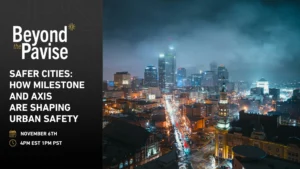HOW THE PSYCHOLOGY OF COLOR HAS A MAJOR INFLUENCE AT EVENTS
The psychological aspect of color is critical to understanding how lighting and design influence events and their attendees. Using certain shades of blue, for example, can instill feelings of loyalty, calm and serenity among guests. Employing yellow in the right way meanwhile conveys a sense of creativity, happiness, and intellect.
Colors impact audience perceptions and emotions throughout the course of an event. The combinations of colors seen by attendees, along with their intensity and the specific shades and hues used, can encourage a broad range of responses. Let’s take a look at the importance of the psychology of color and its applications in the world of events.
COLLABORATING TO SET THE STAGE AND EVOKE A MOOD
Choosing the right color or combination of colors for the many components that make up an event help the audience get in tune with each part’s intended purpose. The influences of different colors, as well as the positioning of lights and the lighting style used, combine to create subconscious expectations among guests before they hear a single word spoken on stage or participate in any interactive elements.
One critical factor to consider is how color is used, not only the initial selection. For many events, the palette is partially or completely chosen beforehand through specific branding requirements and expectations to use a company’s established colors. In these very common instances, it’s vital that a talented lighting designer is on hand to use his or her expertise and unique perspective. Great lighting designers can blend and shape the existing palette to evoke the mood desired for the event while staying within necessary color guidelines. There’s also the need for close collaboration with the creative producer to ensure his or her vision for the event is faithfully captured and developed.
A truly successful design melds all of these considerations together, delivering a vision that appeals to and influences the audience while taking the needs of the company, brand, event, and producer into consideration. With a highly skilled lighting designer coordinating those efforts, an exceptionally positive result is well within reach.
COLOR AND LIGHT’S INFLUENCE ON AN EVENT’S AUDIENCE
No matter the specifics of the conference or event, lighting and color has a major impact on attendees. The color cues they receive throughout the duration of the event influence how they perceive everything from the keynote speaker to the people sitting next to them. Even though attendees may not realize it, the colors used in the event’s palette will have an influence on them. They may not recognize the psychology behind the choice of lighting, but they’ll feel its effects. The influence color has on human emotions is undeniable.
Every color has certain emotional cues tied to it. For example, red often indicates excitement or a sense of boldness, while green is associated with peacefulness, nature and health and orange is frequently tied to cheer or confidence. Choosing the right mixture is vital, and there are plenty of other considerations related to the company and its brand to make as well. The mixture of colors will also influence the audience, so gaining a clear view of how the different colors used will interact and appear in the finished product is especially important.
The choice of a lighting style can be difficult without prior knowledge of how the plan will play out in a specific location, taking everything from the existing colors in the facility to the dimensions of the stage and other rooms throughout the facility into account. When a conference returns to the same building year after year, it’s easy to plan ahead. But for the many instances where a corporate event isn’t presented on a regular schedule or moves across the country to different venues, this approach isn’t effective. There are also plenty of technical issues to consider, like where lights can be mounted and how that positioning impacts what attendees see from their positions in the room.
Color design is certainly a science, but it includes a number of soft or conditional elements that make each use of it different. This is the place where the individual experience and expertise of the lighting designer is more critical than anything else. The skills of the lighting designer, the makeup of your audience, the equipment at your disposal, the facility in which the event is held and many other factors have a significant impact on the final, visible product. When it comes to the psychology of color and its practical application, working with a top-notch designer to pre-plan and visualize an event’s appearance ahead of time is vital.
to learn more, head to the Alford Media website here: http://www.alfordmedia.com/how-the-psychology-of-color-has-a-major-influence-at-events/









